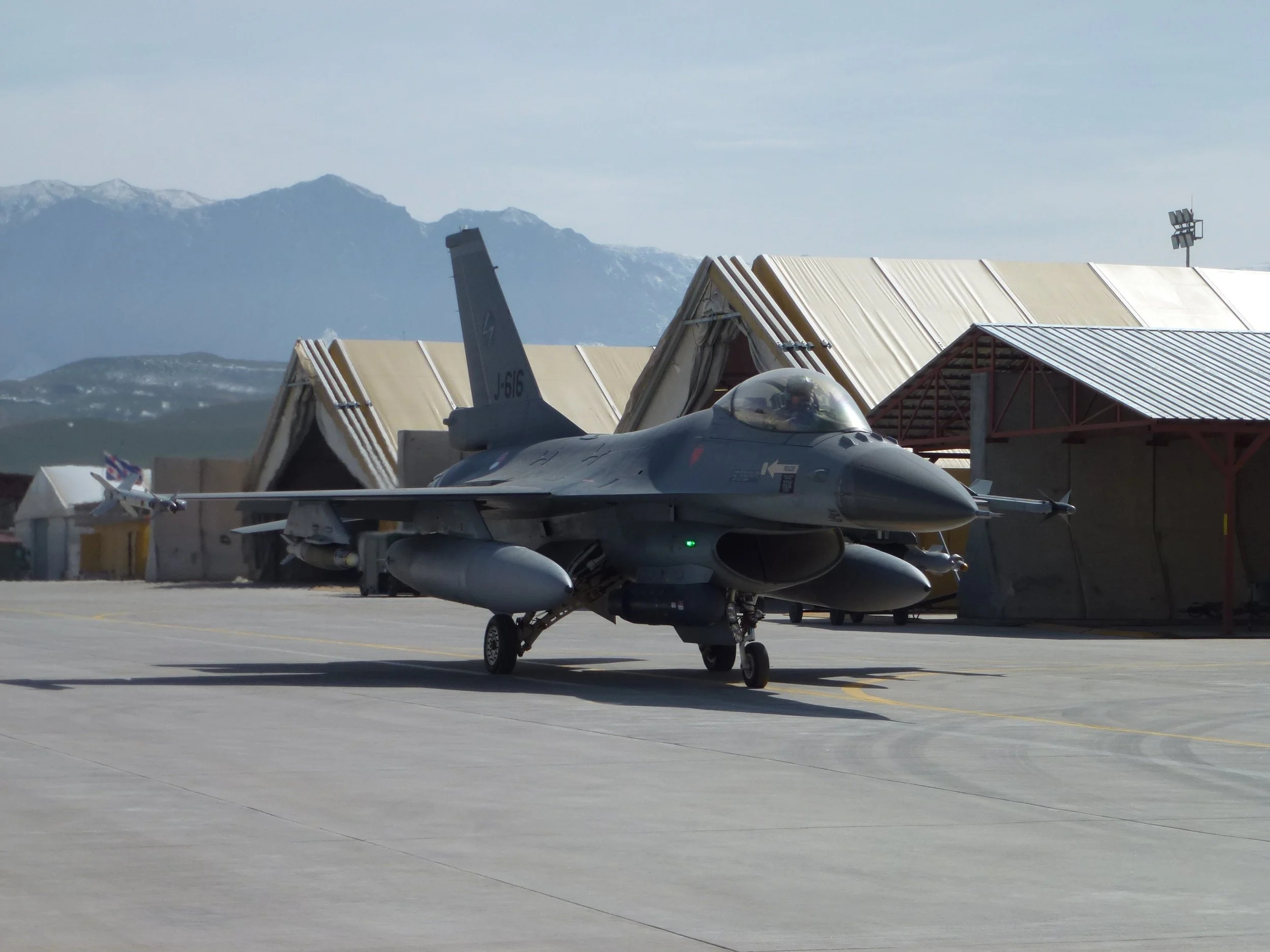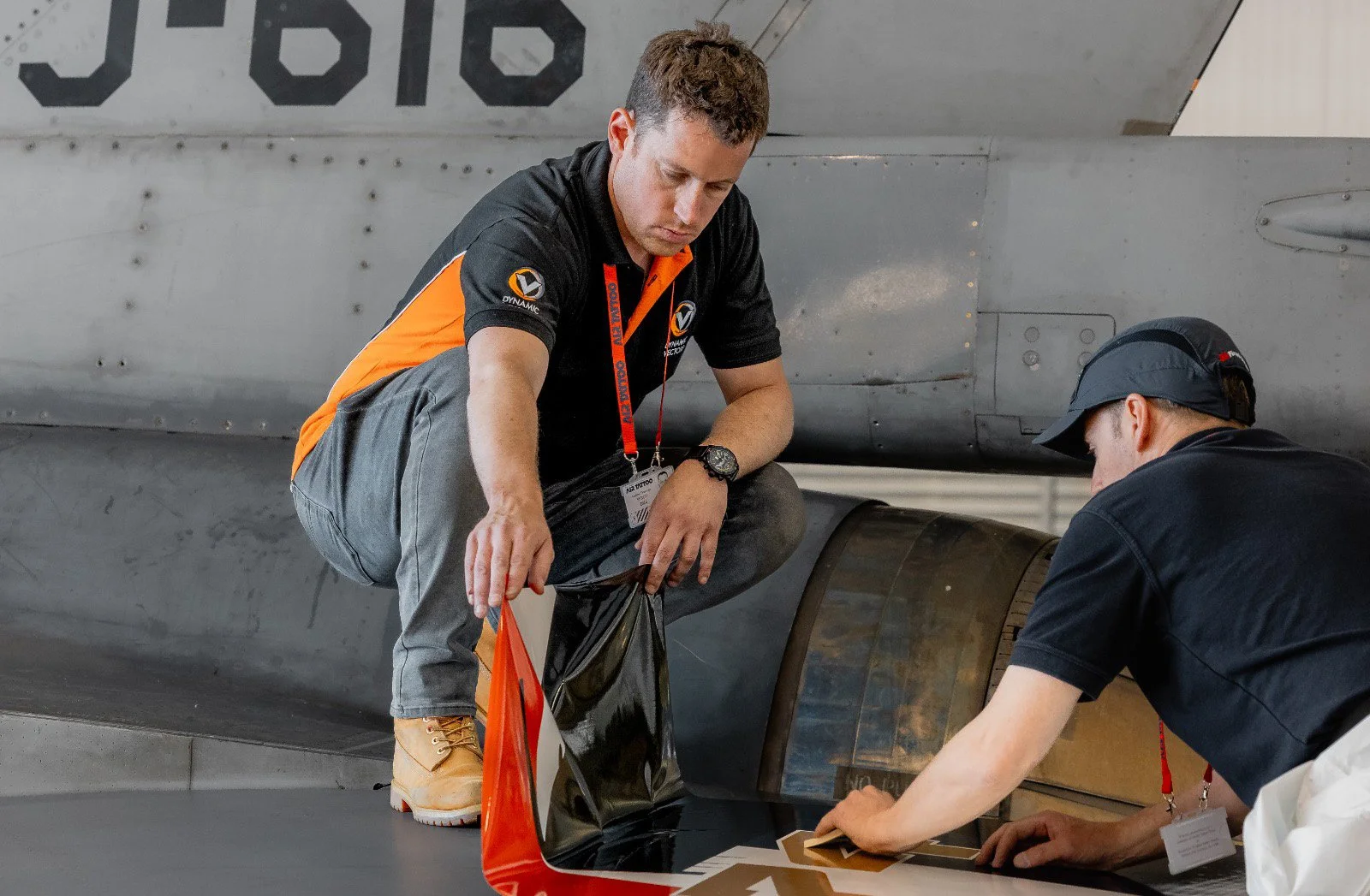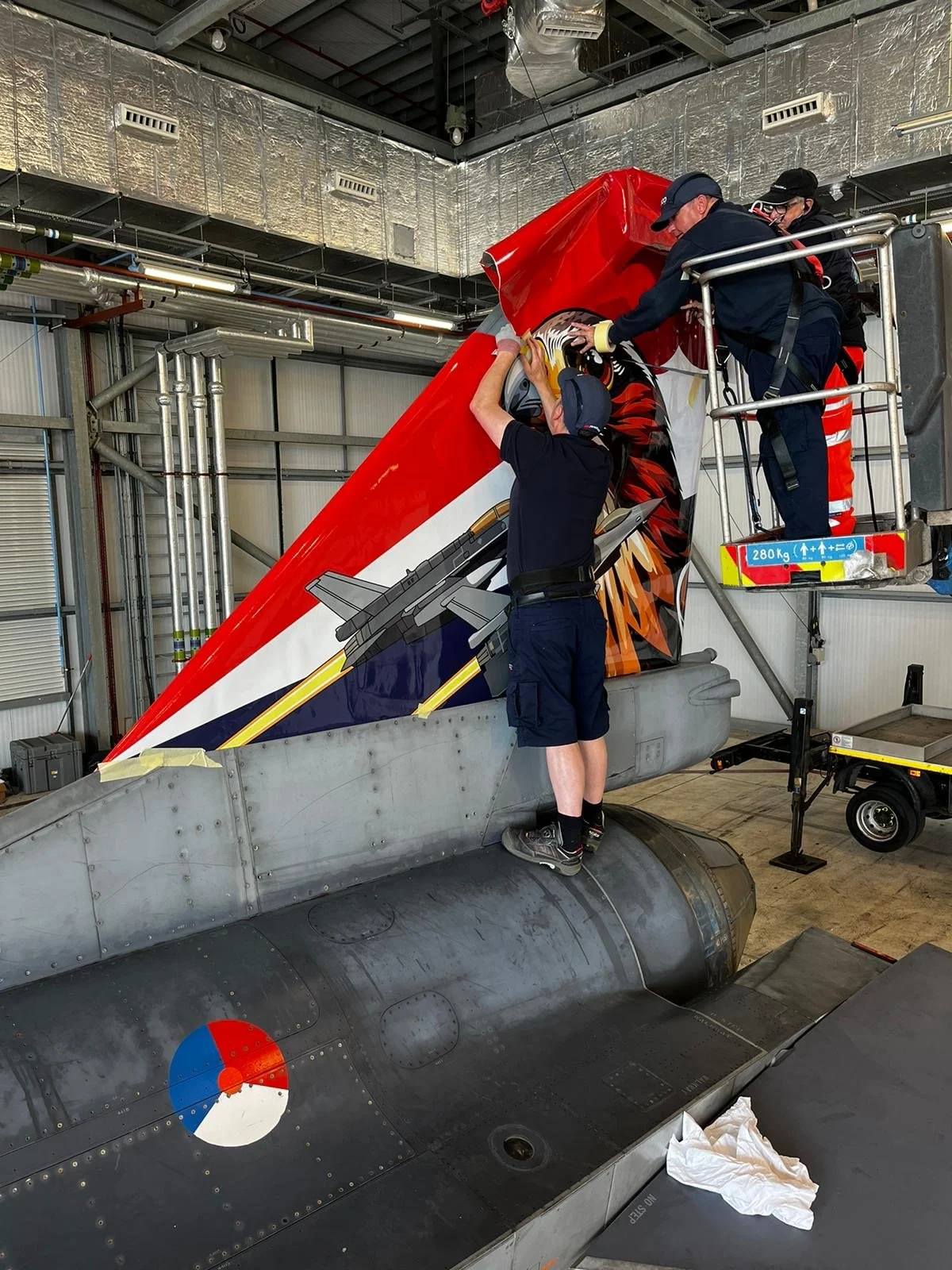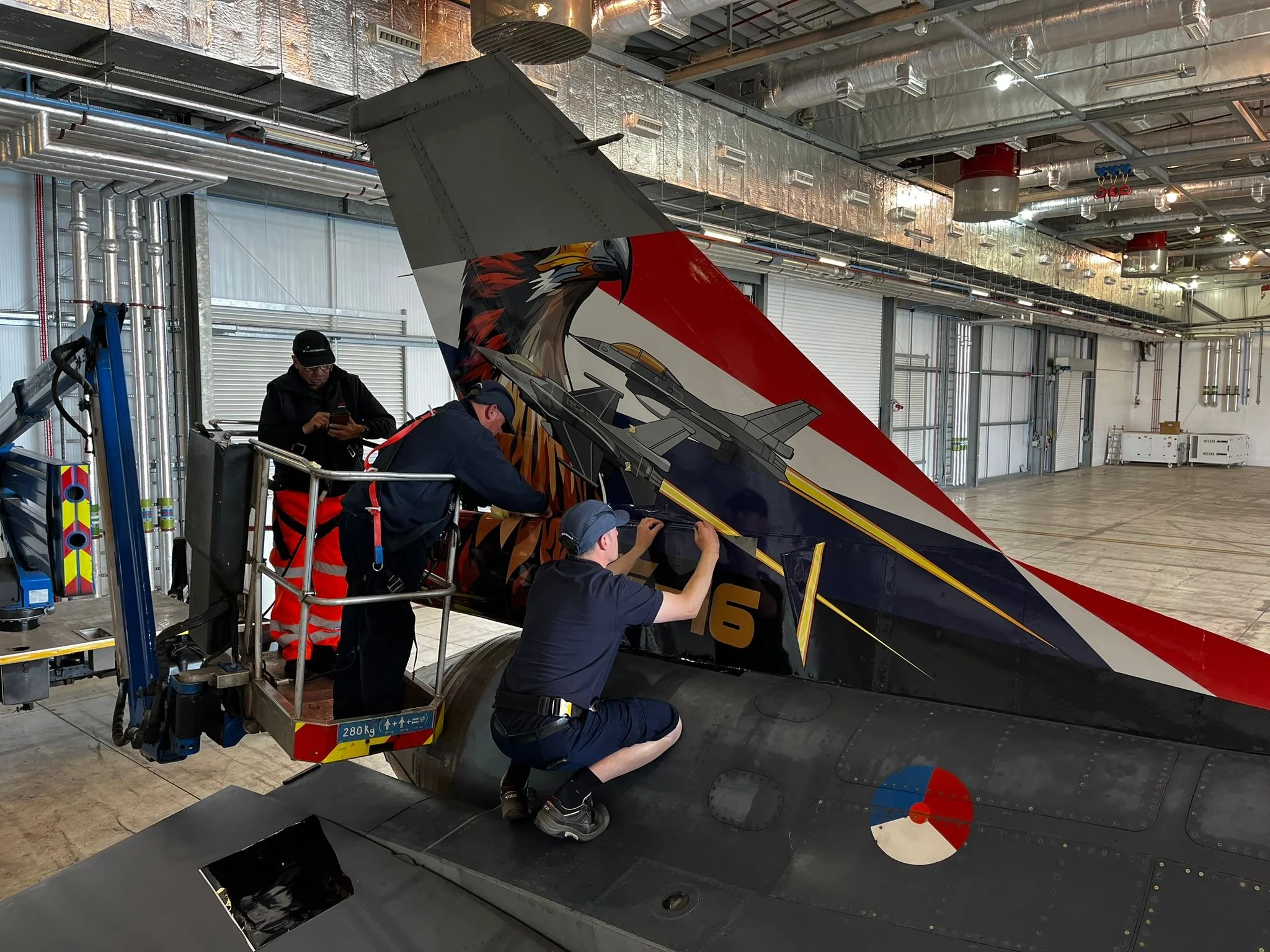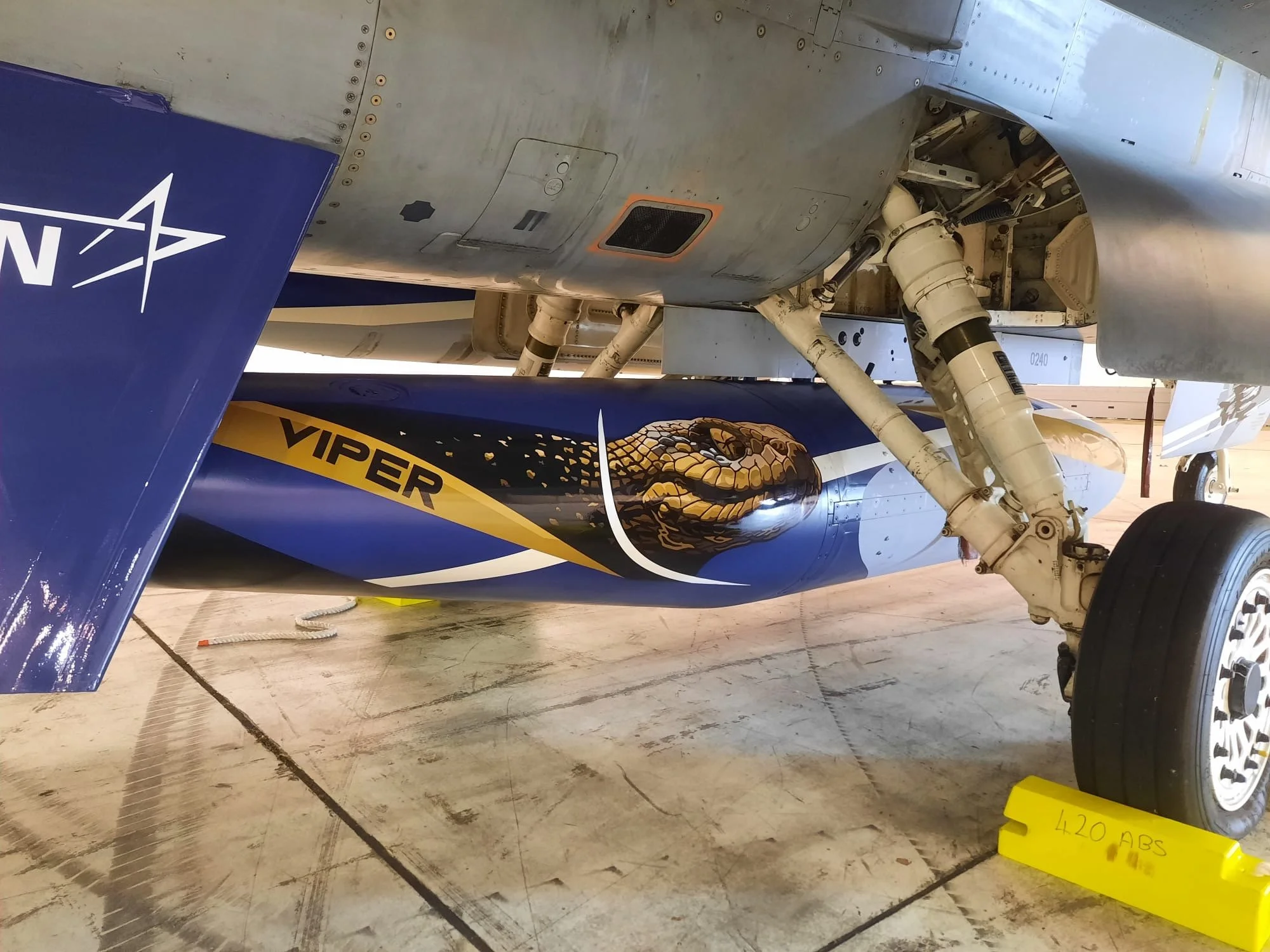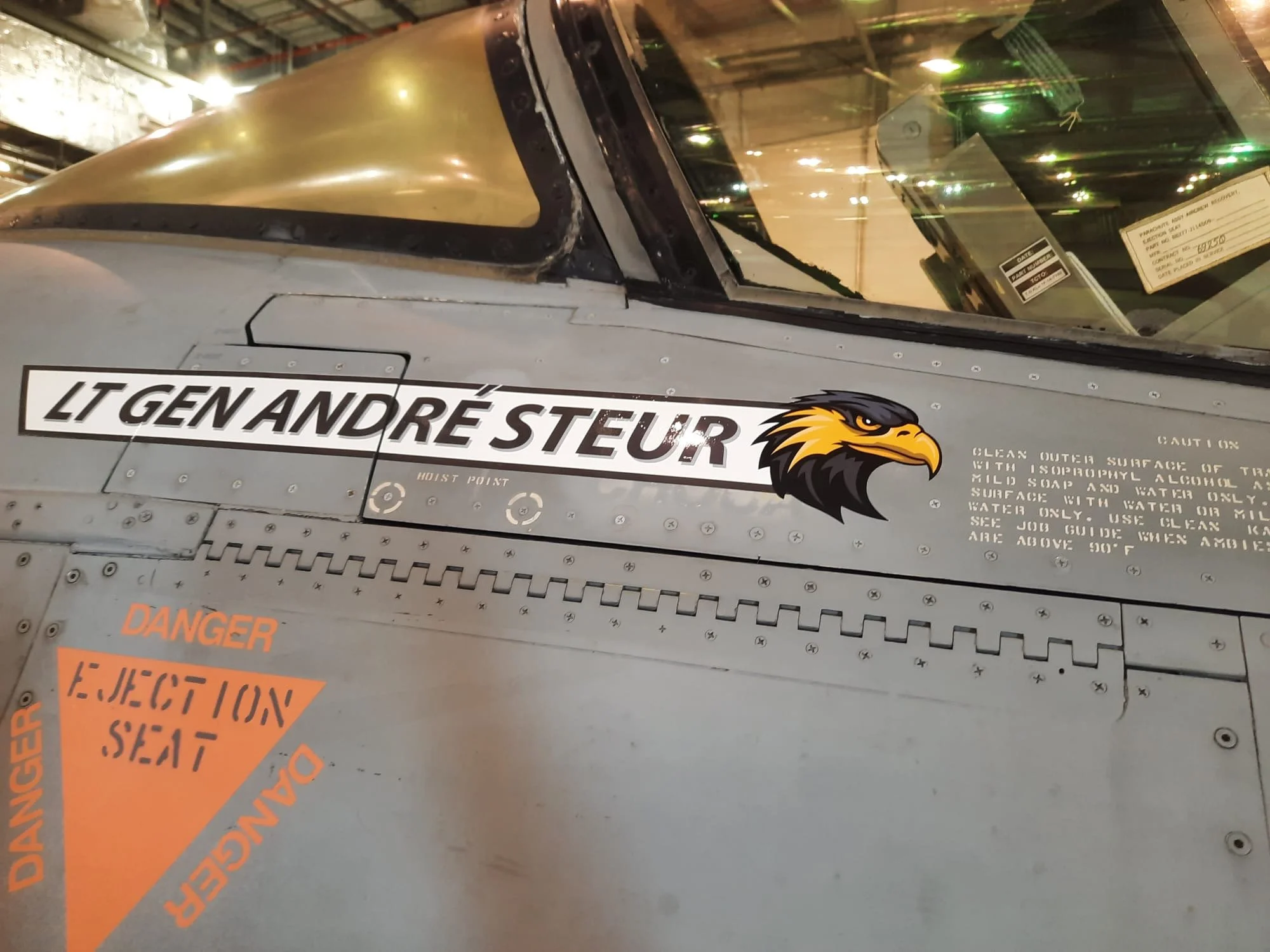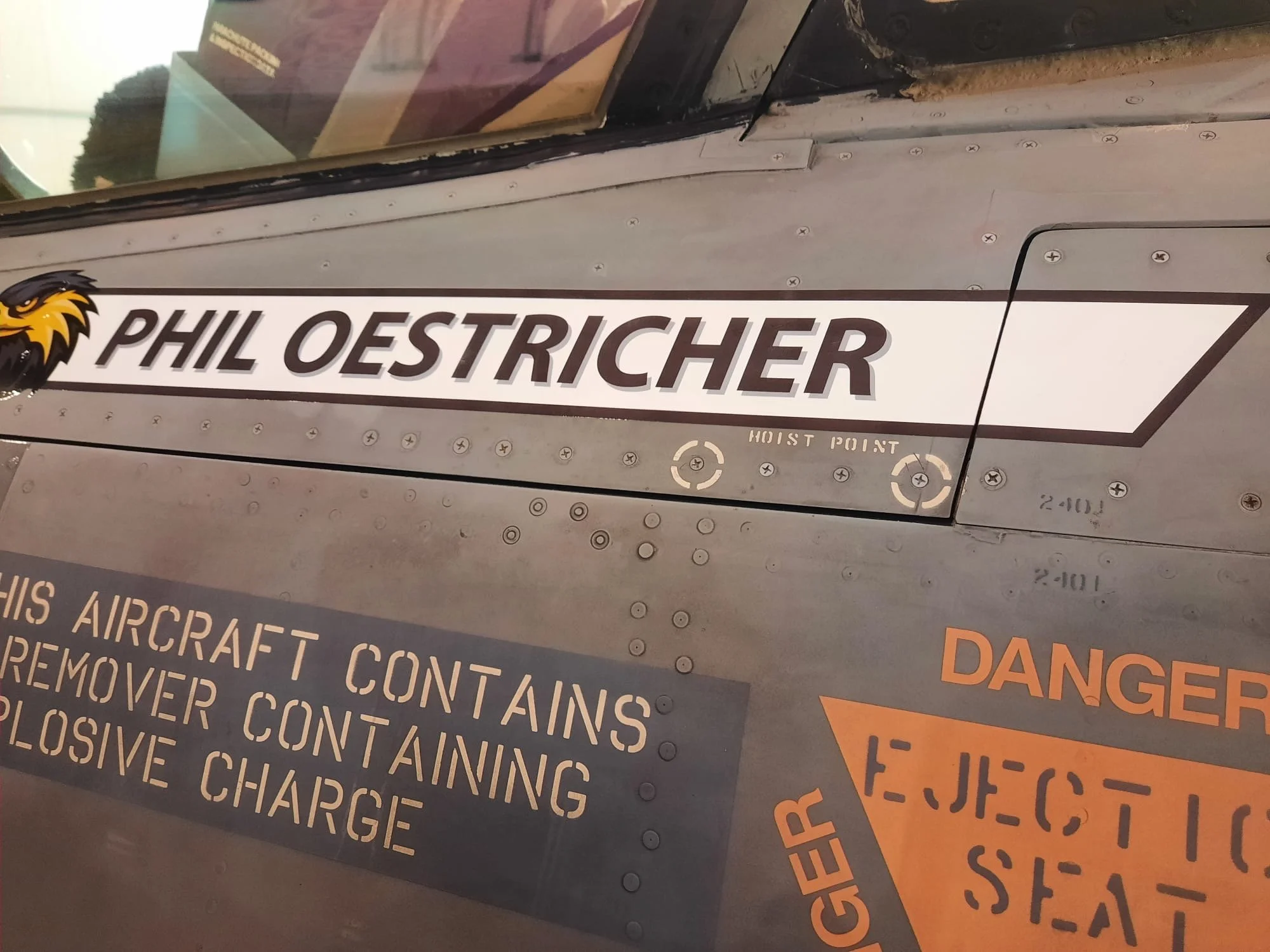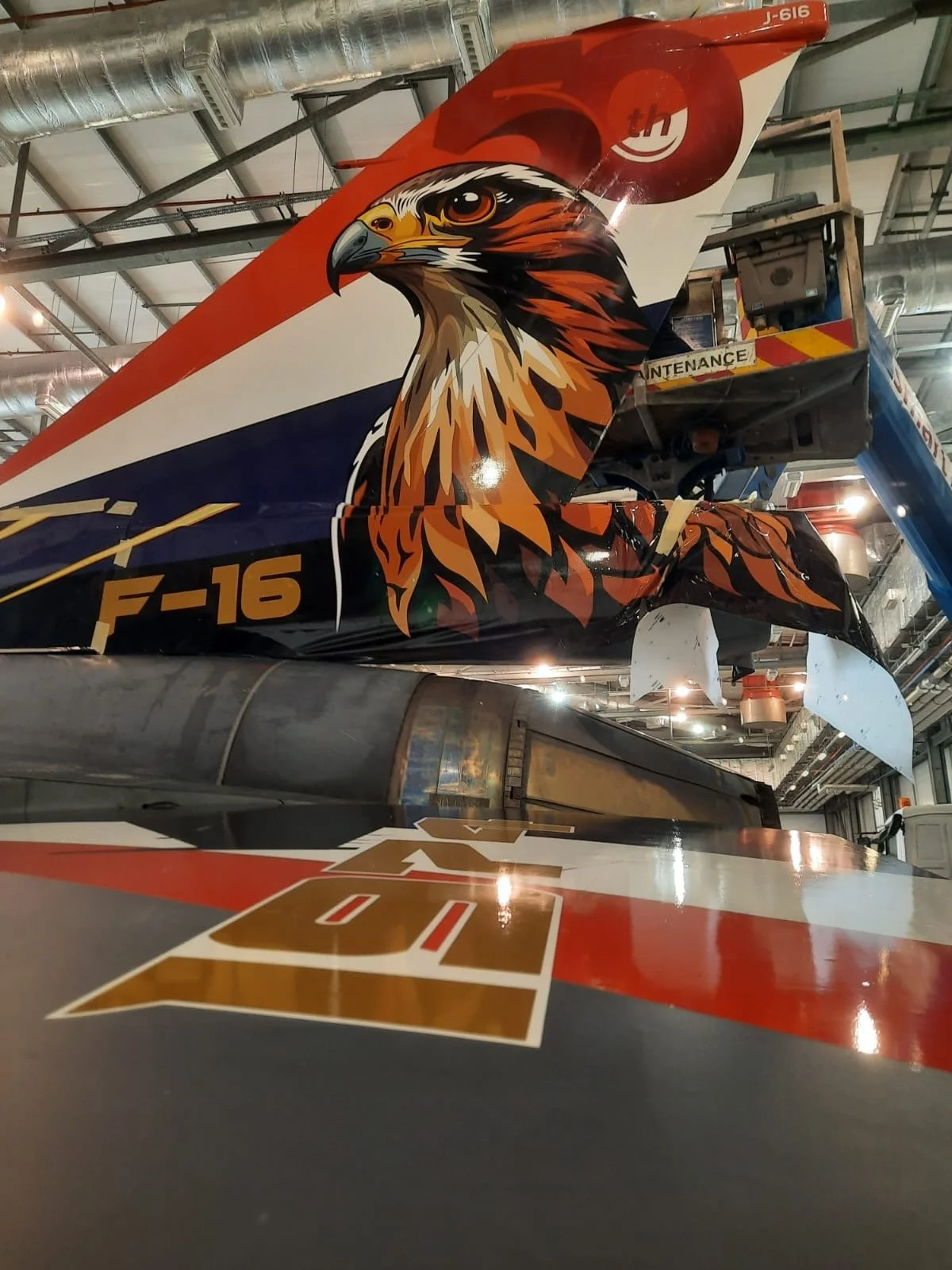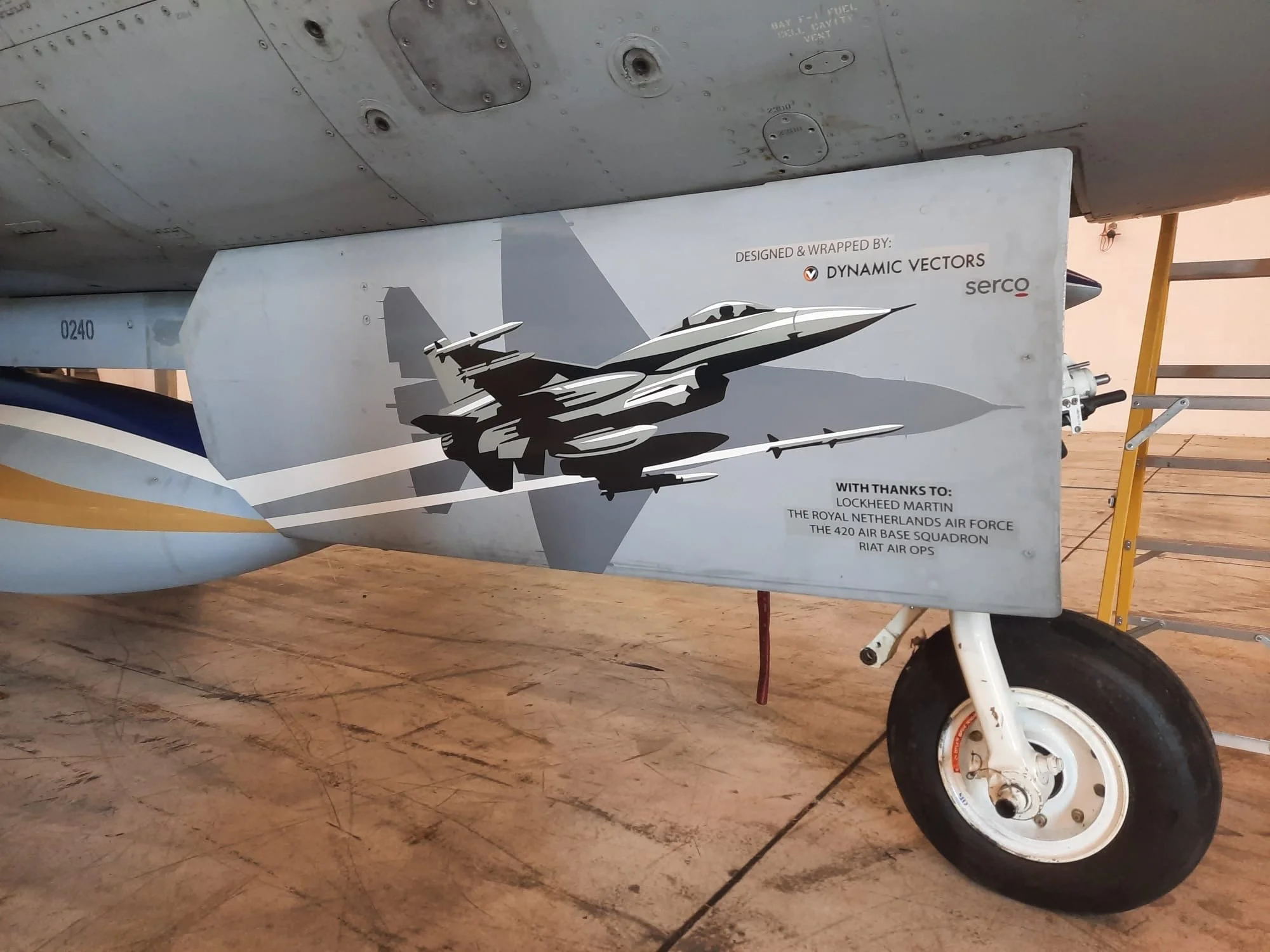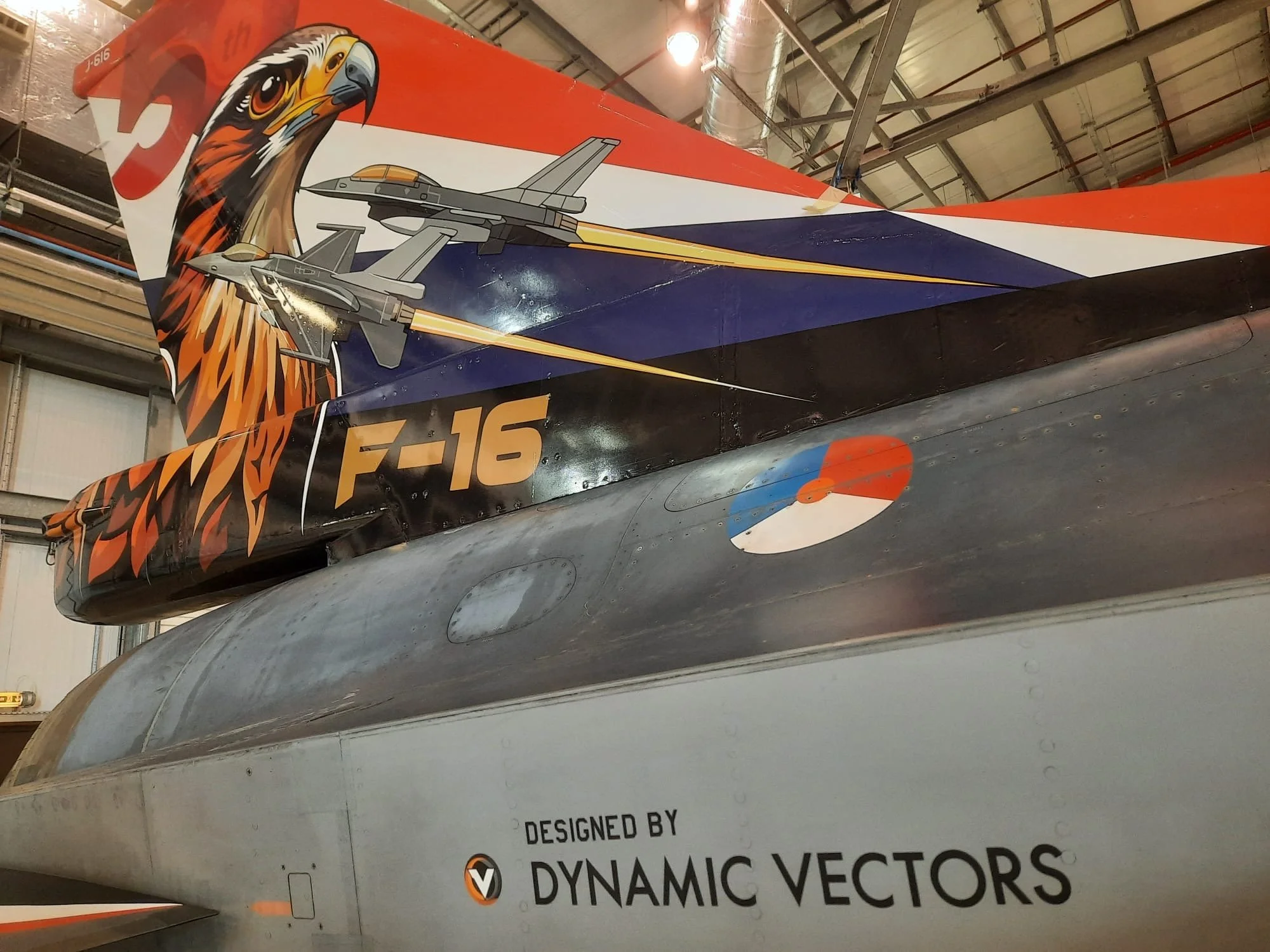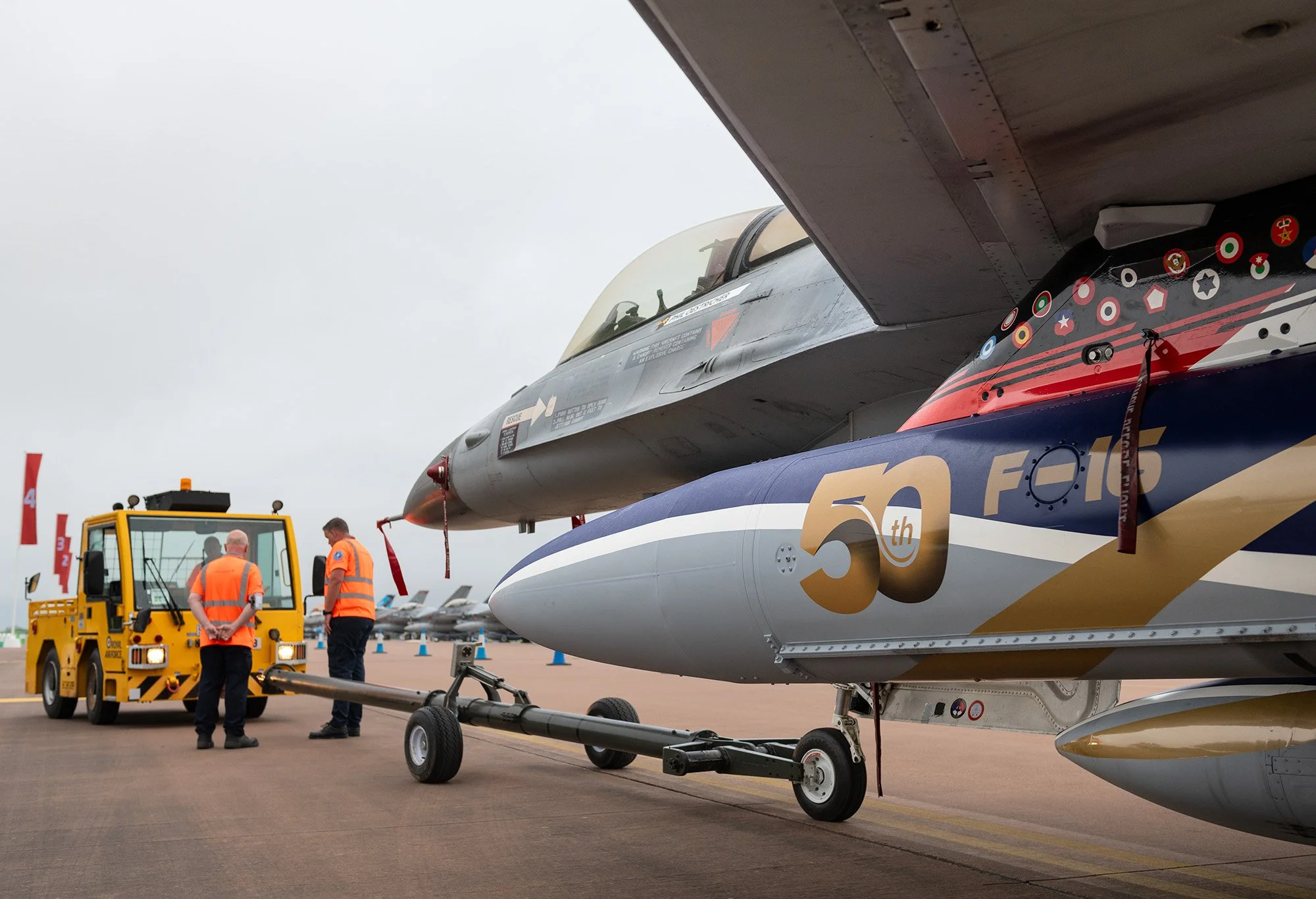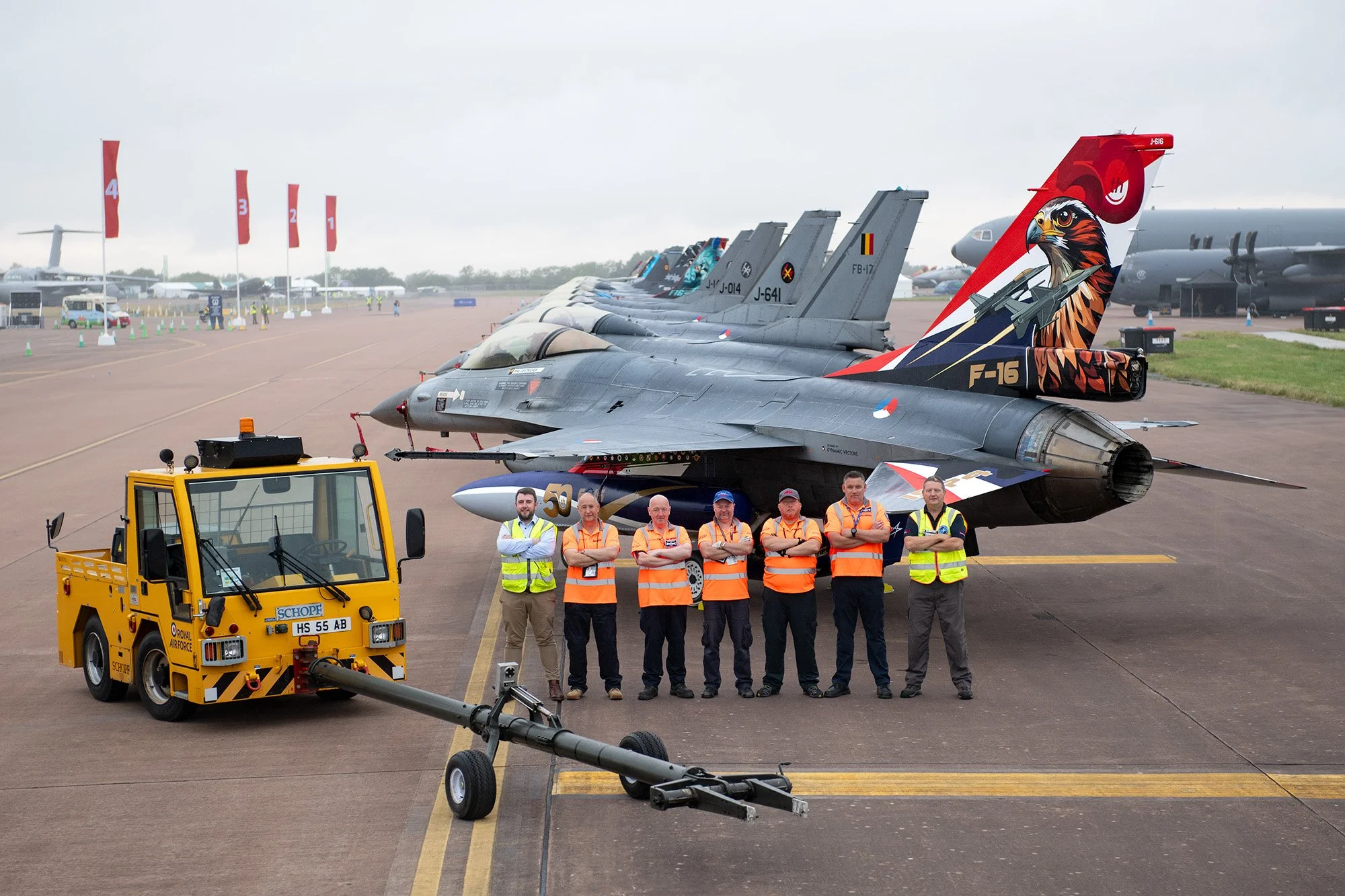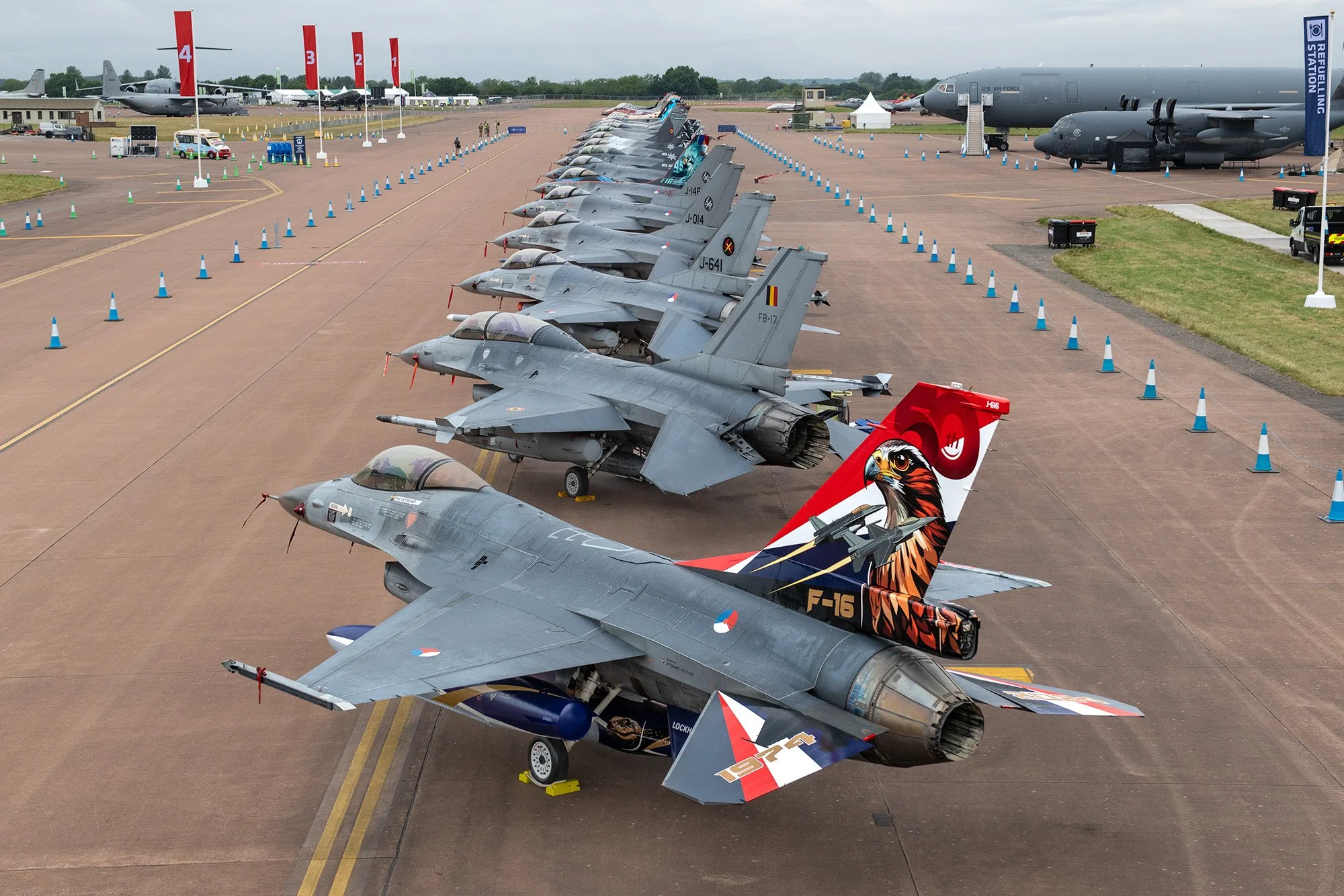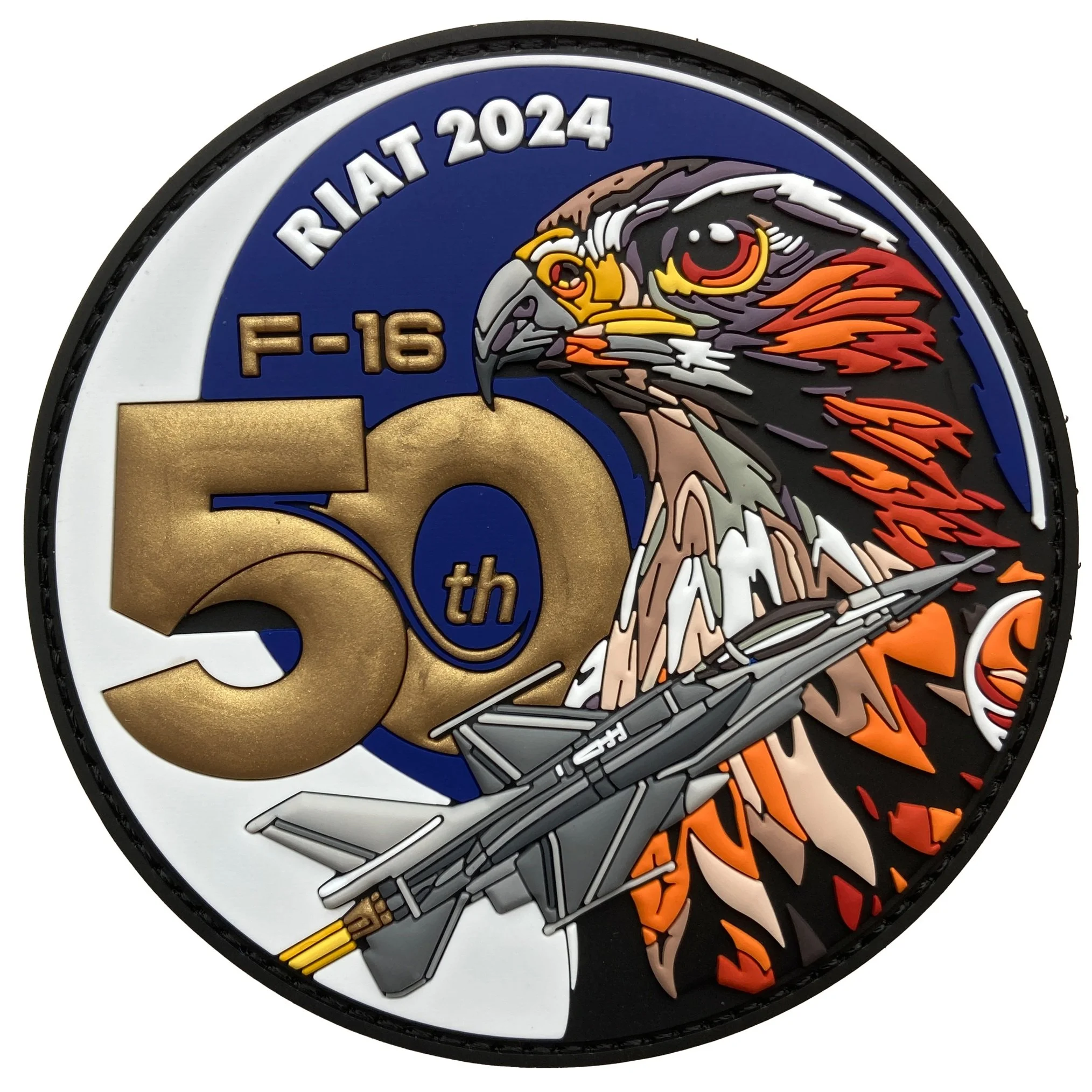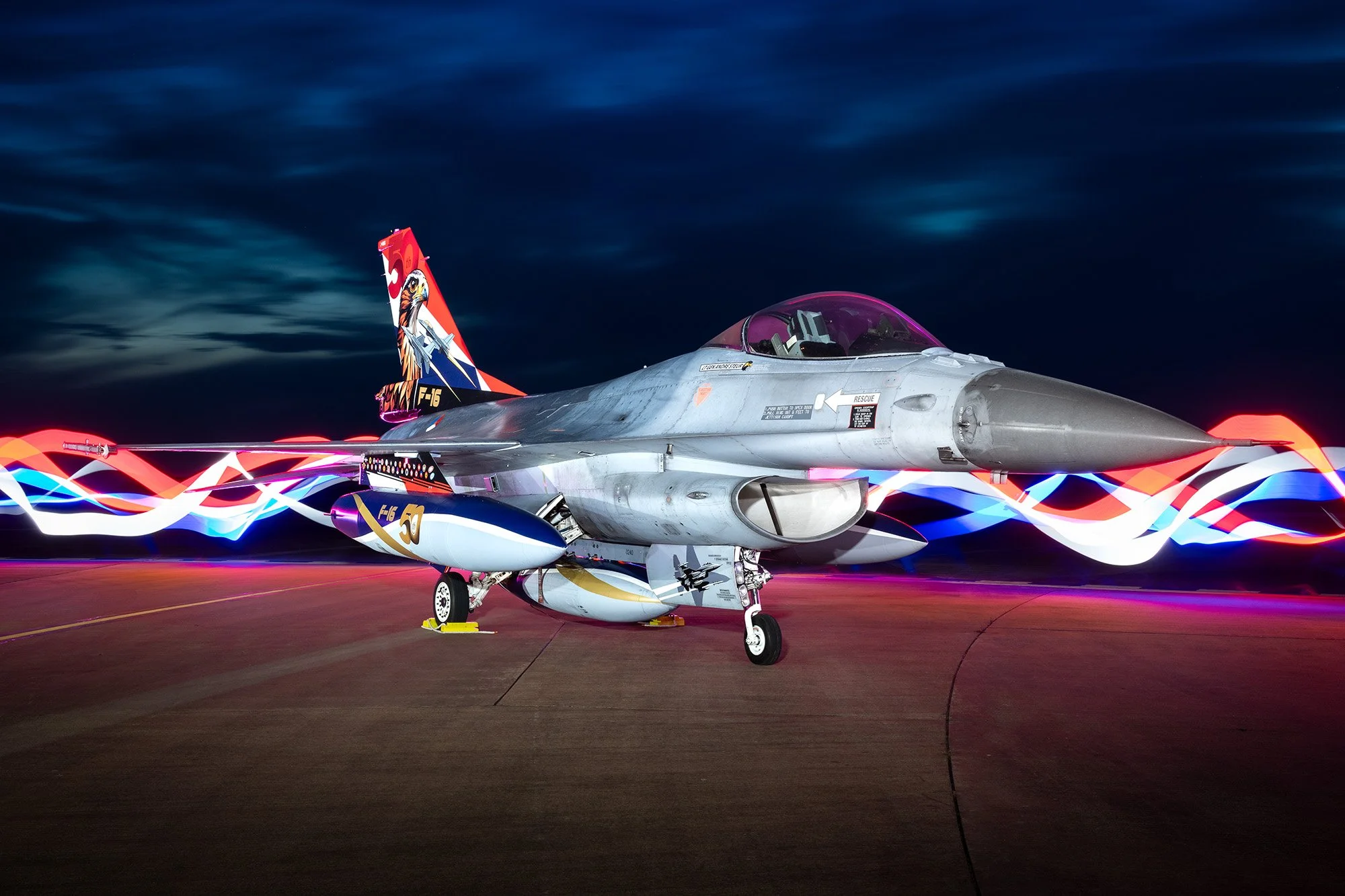Celebrating 50 Years of the F-16: A Special Aircraft Livery Unveiled
We are thrilled to announce the unveiling of our latest aircraft livery, commemorating the 50th anniversary of the iconic F-16. This two-year project, spearheaded by Peter Reoch, Head of Air Operations at the Royal International Air Tattoo (RIAT), was made possible through the generous support of Lockheed Martin, Northrop Grumman, and GE Aerospace.
Overcoming Challenges and Bringing a Vision to Life
The project faced significant cost and logistical challenges, all of which had to be overcome between its birth in 2022 and delivery in 2024. As ideas began to form for the design alternatives, the team considered various options to procure an airframe upon which to realise them. These included using a grounded or flying aircraft. Beyond the physical canvas though, other hurdles needed to be jumped, as we worked to decide where and how to paint the jet whilst considering whether it needed to be returned to its operational flying scheme after RIAT 2024.
After multiple European F-16 operators were consulted, several remained on the table but it was the Royal Netherlands Air Force (RNLAF) who kindly stepped in with a robust offer to utilise J-616, which was a life-expired airframe in storage at Volkel Air Base in the Netherlands. Volkel’s gate guard was, until early 2024, J-240. This F-16A Block 10 had been scheduled for removal from its mount at the entrance of the base and a later F-16A Block 20 MLU (originally a Block 15) had been earmarked to replace it…J-616. The RNLAF very kindly agreed to delay the process until J-616 had appeared on its own undercarriage one last time at RAF Fairford, resplendent in 50-year markings.
J-616 on operations in Afghanistan in 2013 - the aircraft was later reunited with one of its engineers from this era - Martijn Diks - who serves on the RIAT Engineering Team and handled the aircraft once again during the show (Image courtesy Martijn Diks)
The Journey to RAF Fairford
A detailed roadmap was created by RIAT Air Ops, the RNLAF and Dynamic Vectors. RIAT focused in on customs challenges, noting that importing military hardware (however temporarily) via a civilian port is not without complication. Especially when the foundation of that hardware is American technology. The RNLAF then facilitated the dismantling and transport of the airframe, which moved via road and sea, arriving into Harwich in June before making its way to RAF Fairford. To enable this move, the aircraft's tail and wings were removed and reattached upon arrival - another significant problem as cranes had to be acquired in order to do this once in Gloucestershire.
The Design and Painting Process
With the design having been developed by Dynamic Vectors and approved by Lockheed Martin and RIAT, the Dutch paint team set about part-painting the designs settled upon for the fuel tanks. The RNLAF very kindly agreed to lay the base colours down, to avoid having to wrap the entire circumference of the tanks…and so Sgt 1. Arjan Wolf, SM. Dick de Ruiter and Sven de Haan set to work in the Netherlands.
After Dynamic Vectors requested a centreline tank as well as under-wing fuel tanks, the RNLAF even made the efforts to procure one - further highlighting their incredible support and dedication to the project. Having plotted the full 3D design, the Dynamic Vectors team began intricately creating individual paint masks to fit around the complex curves of the aircraft, which were checked via a recce of the airframe once it was in the hangar at Fairford.
Over five days in early July, three weeks ahead of RIAT 2024, the mammoth project began. With the help of local subcontractors and industry partners Serco, the design began to come to life. The wrapping team consisted of Graham Hall, Ian Moore and Andy Donovan.
Honouring the F-16's Legacy
The livery simply had to prominently feature a ‘Fighting Falcon’ to honour the aircraft’s name, cemented by its original manufacturer - General Dynamics. Whilst this was the prime focus, the team also felt it important to acknowledge the aircraft's unofficial nickname which later grew out of its time as a Lockheed Martin product - as such the ‘Viper’ simply had to be part of the picture. Keeping the snake at the centre of the scheme was vital but it couldn’t be displayed too prominently; so the hope to use the centerline fuel tank was kept alive by the RNLAF’s generous efforts.
The designer also wanted to hide an ‘easter egg’ in the tail design - to reference half a decade of F-16 operations whilst showing how potent the type remains on the world stage in 2024. On the starboard side of the fin is represented an F-16A Block 5. The Block 1 was the first iteration of the type, which took to the air in its production form in August 1978 (under US Air Force serial 78-0001) but it featured a black radome; a feature which was soon dispensed with due to the failings that resulted when it came to the subject of camouflage! The Block 5 was thus chosen for the tail, given that its grey radome would stand out better against the rest of the design and maintain commonality between the two sides. Flying alongside it is depicted an F-16 Block 70 variant - a two-seat version with the distinctive avionics fairing along its spine, similar to those recently delivered to the Slovak Air Force. On the port side of the tail are represented an airframe akin to an F-16C Block 50, with Conformal Fuel Tanks (CFTs) fitted and then an early F-16B model. An elegant ‘50’ was designed to top the tail and a decision was made to retain the airframe’s tail code just behind it.
After much deliberation, the underwing pylons were chosen to display the national roundels of every F-16 operator, including past, new and expected future nations to use the type (such as Norway, Argentina and Ukraine). This decision was made when it became clear that no outboard pylons could be sourced for J-616 so the outer surfaces of the inboard ones would be fully visible. The red, white and blue lines on the pylons are carefully aligned to match up with those running down from the tail when viewed from the side.
Image by Lee Matthews
As a finishing touch to a half-century of service, two names were chosen to display beneath the cockpit. On the left side we honour the first test pilot to fly the F-16 - Phil Oestricher first took to the air in the prototype YF-16 on 20th January 1974. As a thank you to the Royal Netherlands Air Force for their incredible help in realising the dream for RIAT, it was decided to display the name of their chief, Lieutenant General André Steur on the right-hand side. Lt Gen Steur was appointed Commander of the RNLAF on 14 April 2023 and had previously flown the F-16 earlier in his career.
A Unique Tribute
Initially, the RIAT and Dynamic Vectors teams considered painting the jet in the full YF-16 prototype colours of red, white, and blue. Other alternatives were also explored, such as representing that 1974 scheme on the tail only, and a half-and-half version which transitioned from that to a more modern design at one end. Once it became clear that J-616 would need to return to its operational markings in order to take up its place as Volkel’s gate guard however, the decision was made to partially paint the fuel tanks and apply the rest of the livery as a wrap. So, Dynamic Vectors opted to use the three colours as a backdrop, which fittingly aligned with the Dutch origins of the airframe. Many months later, the US Air Force’s Viper Demo Team rolled out a full YF-16 prototype scheme and Edwards Air Force Base unveiled a tail-only representation, so the entire team was suddenly glad they had taken a different route!
Unveiling at RIAT 2024
The jet was unveiled at RIAT 2024, heading up a spectacular lineup of F-16s from around the world, towed expertly into place by RIAT’s dedicated engineering team.
For a few days this special livery celebrated 50 years since the F-16 first took to flight. Following the air show the jet had been intended to be returned to its original 312 Squadron colours before being transported back to Volkel by road and sea to take up its new place as a permanent gate guard, to commemorate the F-16's legacy in the Dutch Air Force.
However, on the final day of the show, the Royal Netherlands Air Force announced that they were so pleased with J-616 that the decision had been taken to preserve the design and return it to the Netherlands to take part in the retirement ceremony for the F-16 in Holland. Wonderful news for the Royal International Air Tattoo and design teams, who had spent 2 years trying to bring concept into reality. A fitting end to J-616’s career.
We couldn’t resist also creating a patch to celebrate the anniversary and special livery which we released at the same time on our online shop.
Acknowledgements
We extend our heartfelt thanks to RIAT Air Ops, Lockheed Martin, Northrop Grumman, GE Aerospace and our partners within Serco. Also to the 420 Air Base Squadron for their support in achieving this project in the weeks before RAF Fairford was handed over from the US Air Force Europe to the RAF Charitable Trust Enterprises ahead of RIAT 2024. To everyone who contributed to this remarkable project - thank you.
If you would like to know more about what we do then please feel free to follow our social media pages or get in touch for more information on on how you could commission your own livery!


